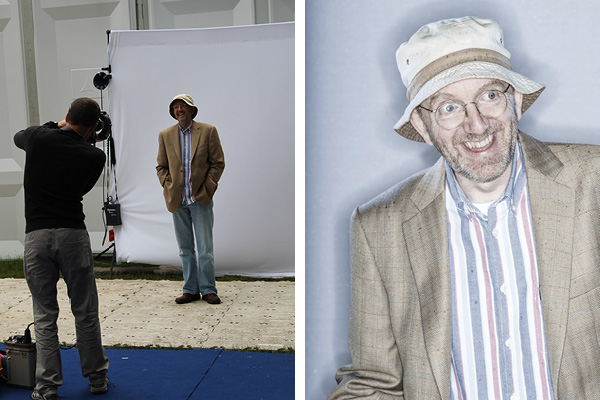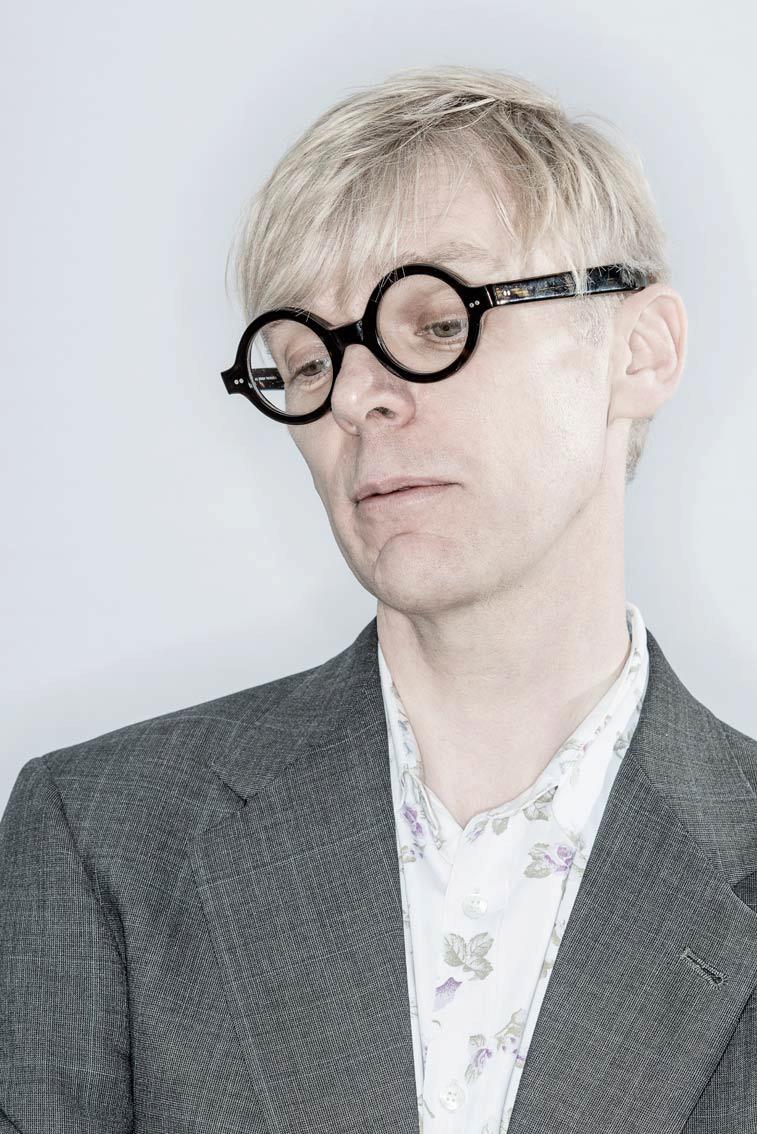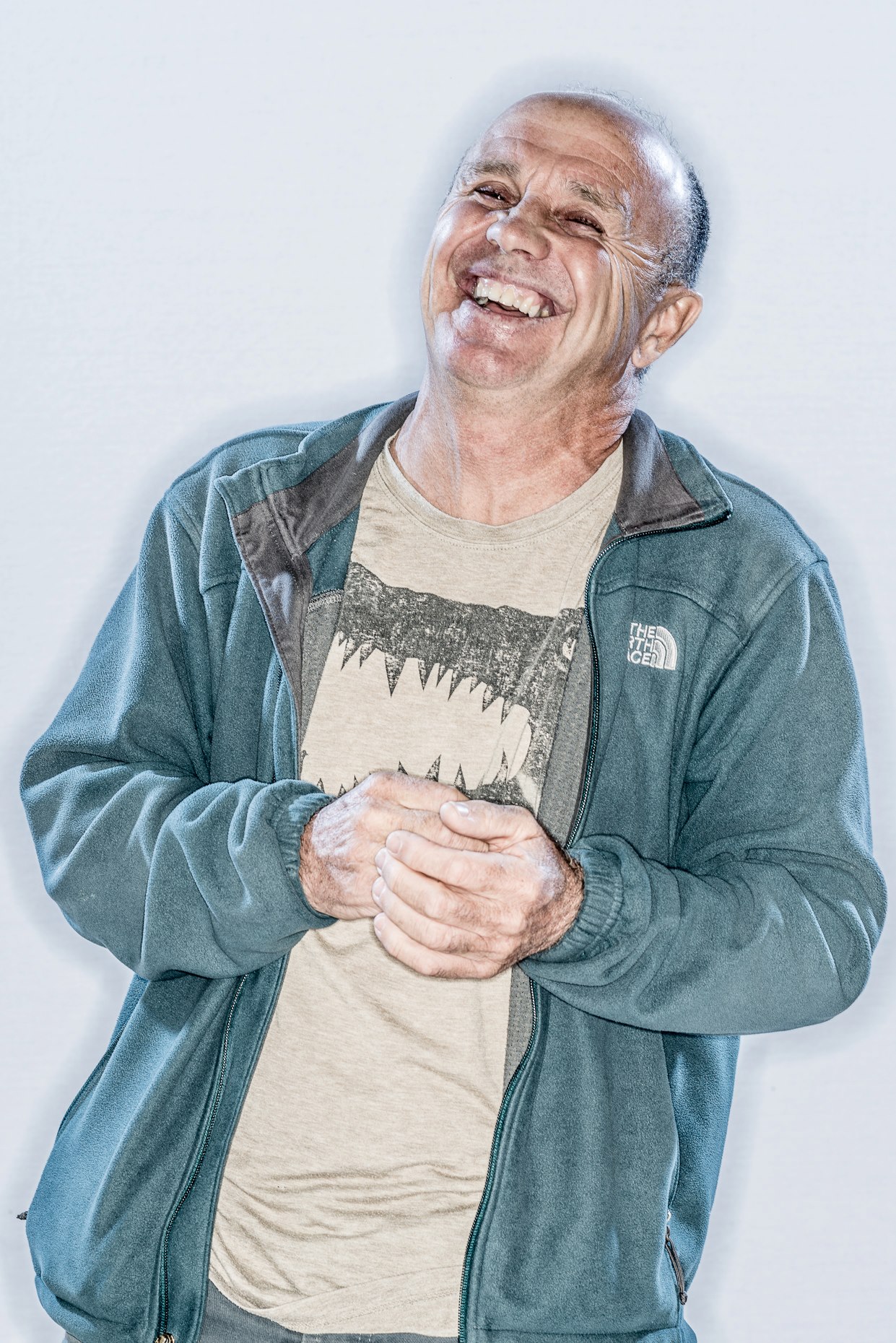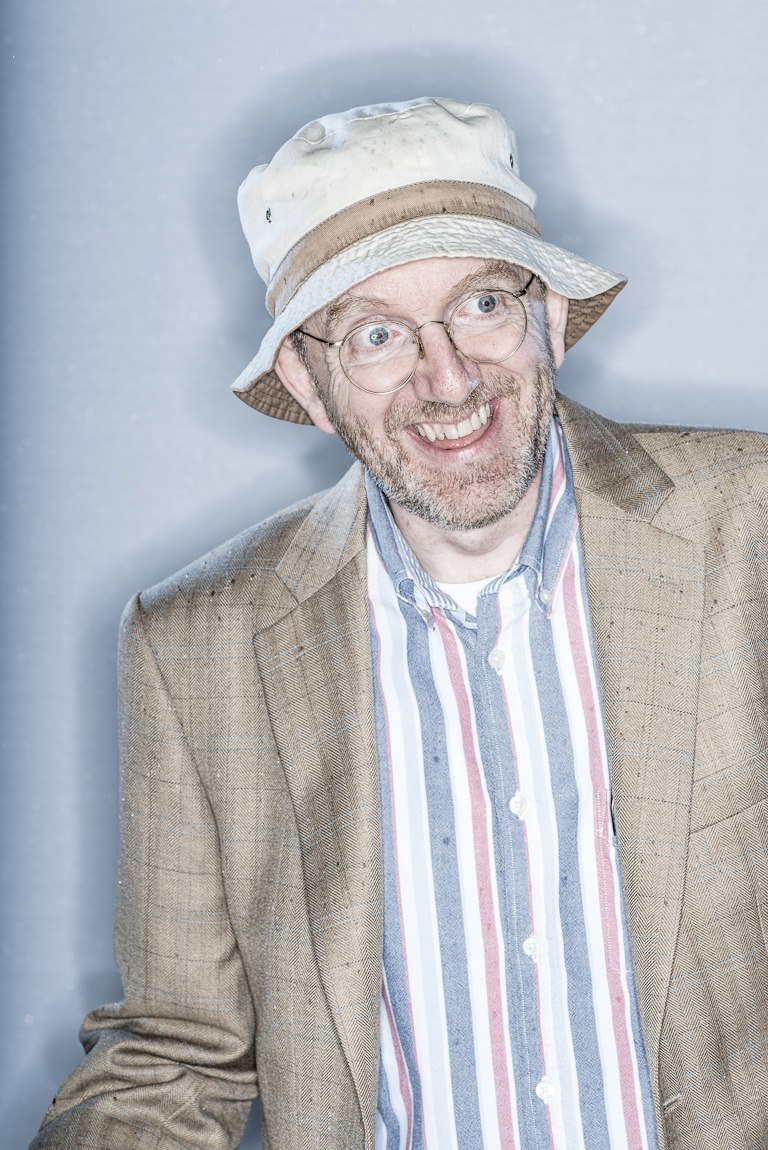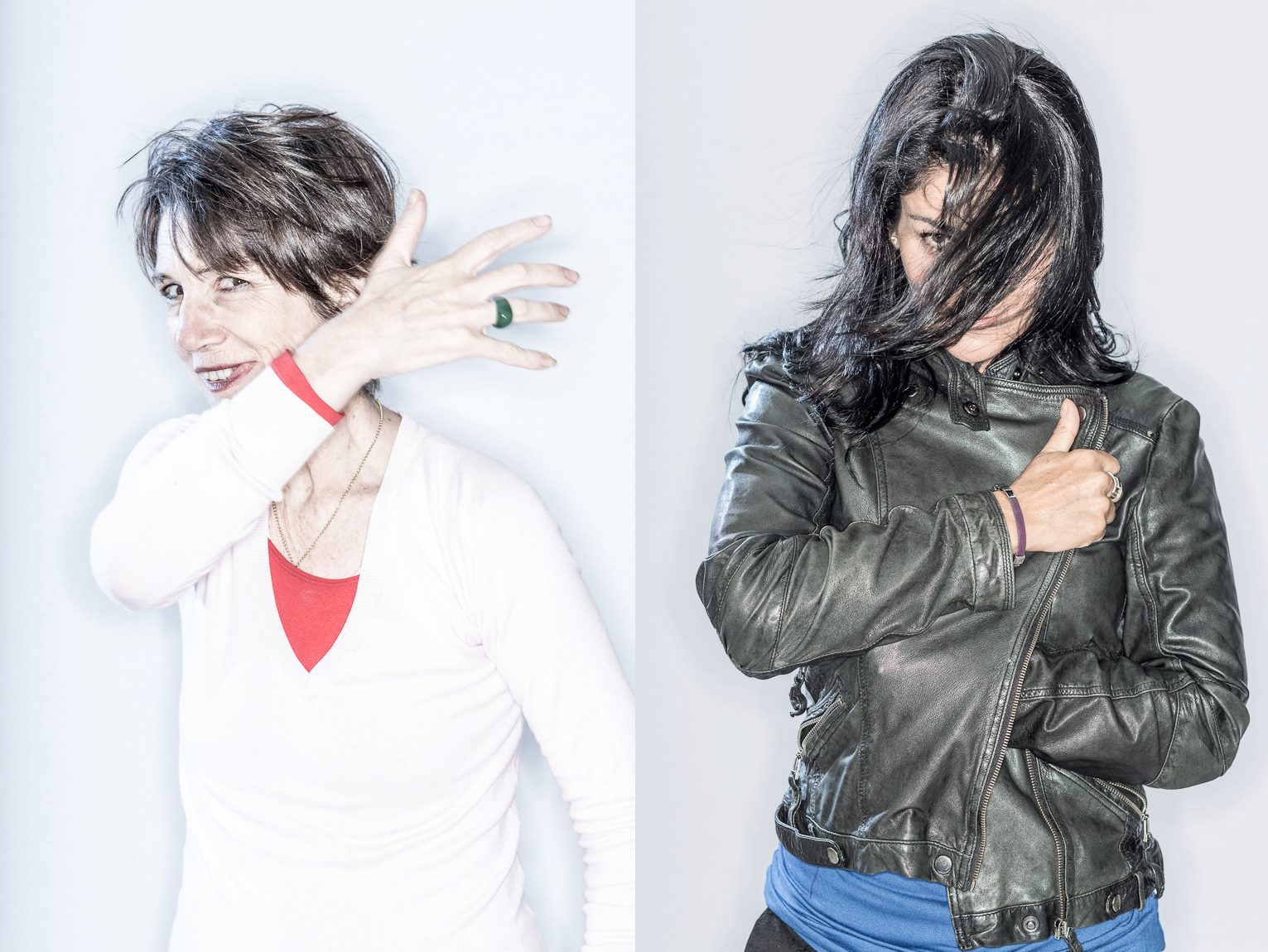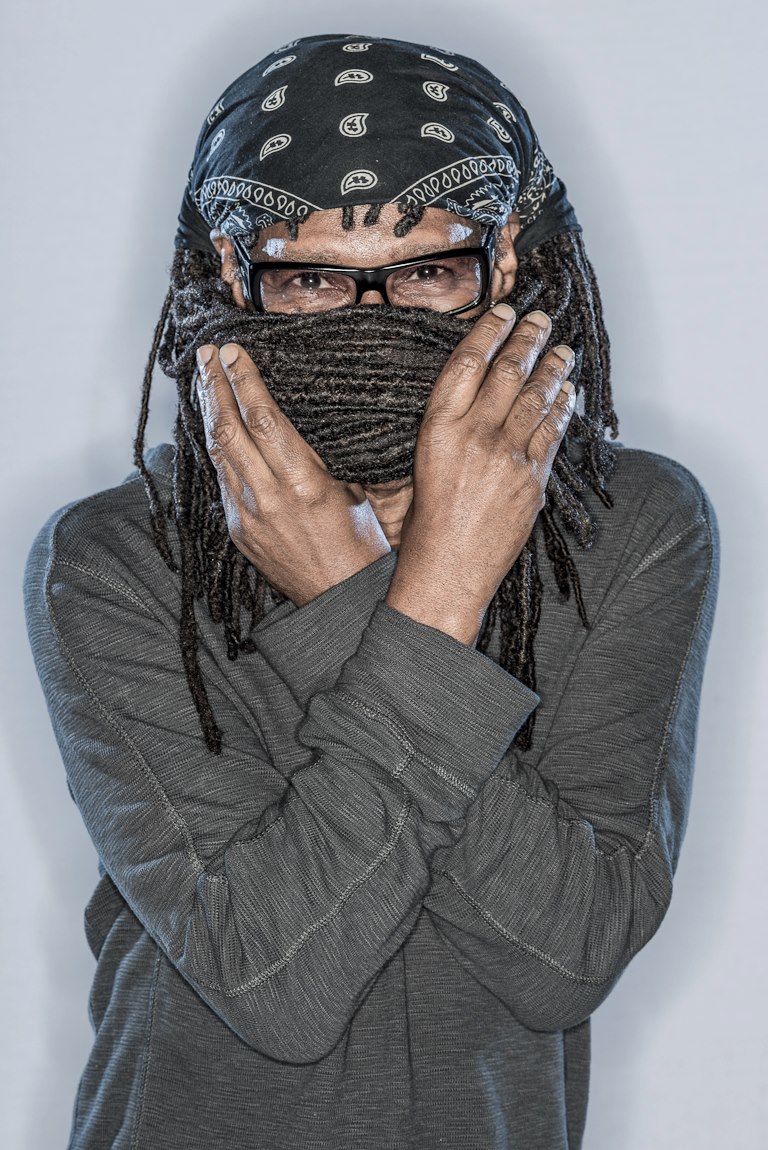Authors on Display at the Edinburgh International Book Festival
It’s not every day I get to meet the photographers whose portraits provide a glimpse into the lives of the authors we feature in WLT. So when I heard about the evolving exhibit of author portraits on display at the Edinburgh International Book Festival, I jumped at the chance to meet with the exhibit’s creator and curator, Chris Close.
Close has worked as a freelance photographer for the last two decades, creating campaigns for large corporations, small nonprofits, and everything in between. By contrast, this portrait exhibit is a true passion project for Close. Each day of the festival, he takes photos of five to seven authors on average (for a total of nearly 100 by the festival’s end). Each night, he edits the photos and selects which ones to print for display the next day. As the festival spirits on, the walkways around Charlotte Square slowly morph into a gallery where festivalgoers stop and reflect on authors they may have seen and heard just the day before.
When we sat down, Close told me how he pitched the idea to festival organizers four years ago.
They agreed, but offered him no paycheck and no guarantees of whom he could photograph or when, just a small outdoor space off the walkway between the press and writer’s tents. It turned out to be the perfect place for him to stalk the authors and pull them aside in between panels.
Because he usually has less than five minutes with each author, his setup is minimal: a white backdrop, a Nikon camera, and a ring flash, which allow for flexibility in the unpredictable Edinburgh weather. It also makes for candid author portraits that venture far beyond the cliché. No bookshelves in the background, no pensive stares from his subjects.
“I’m not a fashion photographer,” Close notes. “I set out to capture the humanity in a subject.” And so he does, even if that humanity appears too raw, vulgar, or unflattering to the viewer. Some authors have even expressed their distaste over the years for Close’s divergent style, but he says most “find it a novelty.”
